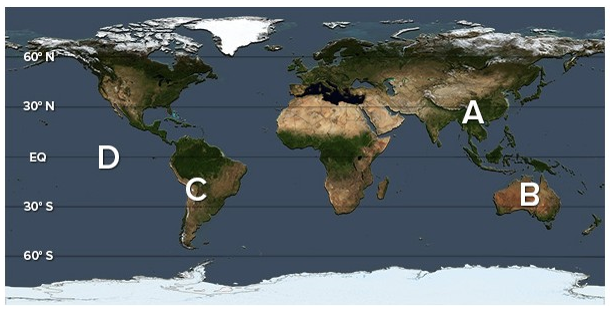The number of degrees of longitude that a place has is derived from the angle formed by the place's location on the Earth surface,
A. the center of the Earth at the same latitude, and the International Date Line at the same latitude.
B. the center of the Earth, and the equator.
C. the center of the Earth at the same latitude, and the Prime Meridian at the same latitude.
D. the center of the Earth at the same latitude, and the North Pole (if in the Northern Hemisphere) or South Pole (if in the Southern Hemisphere).
Answer: C
You might also like to view...
Which of the following statements is false?
a. In the process called speciation, one species splits into two or more different species. b. Geographic and reproductive isolation occur in sequence. c. Sooner or later all species become extinct. d. By definition, the fittest animals are the largest and strongest animals. e. Difference environmental conditions lead to different selective pressures.
The Aboriginal population numbered approximately ________ upon European conquest?
A) 200,000 B) 1 million C) 800,000 D) 750,000 E) 300,000
Which of the following locations has the highest July specific humidity values as a result of the monsoon?

A) A
B) B
C) C
D) D
The subdiscipline of biogeography that utilizes biogeographic principles, theories, and analyses to solve problems in biodiversity management is known as
A) island biogeography. B) phylogenetic biogeography. C) conservation biogeography. D) historical biogeography.